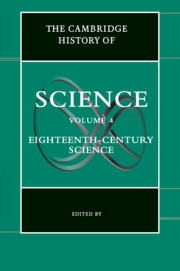28 - India
from Part IV - Non-Western Traditions
Published online by Cambridge University Press: 28 March 2008
Summary
In the history of South Asia, the eighteenth century is unique in the sense that it saw the decline of precolonial systems as well as the inauguration of systematic colonization. This single century encompasses both the precolonial and the colonial phases. Although every historical period is a period of transition, the theme of transition is more applicable to the eighteenth century than to any other period in Indian history. In this century the mighty Mughals broke up, and this collapse has been explained in terms of religious differences, economic crises, and cultural failures. The crucial nature of the last factor has of late been emphasized: “It was this failure that tilted the economic balance in favour of Europe”; it was this failure again that sapped “the capacity to grapple with agrarian crises”; “even military weaknesses flowed from the intellectual stagnation that seem to have gripped the Eastern world.” Is “stagnation” the right description? Was it really an “age of decline”? What was the state of techno-scientific knowledge in this age of political turmoil? It is true that the Eastern knowledge corpus and its implements were no match for what was then happening in the West. But why? Was it because of some “structural fault” in the Indo-Islamic society or some built-in defect in its ideological framework? What was the size and composition of the intelligentsia? What were their economic interests and cultural predilections? Many questions emerge for which only partial explanations can be attempted.
- Type
- Chapter
- Information
- The Cambridge History of Science , pp. 669 - 687Publisher: Cambridge University PressPrint publication year: 2003
References
- 2
- Cited by

